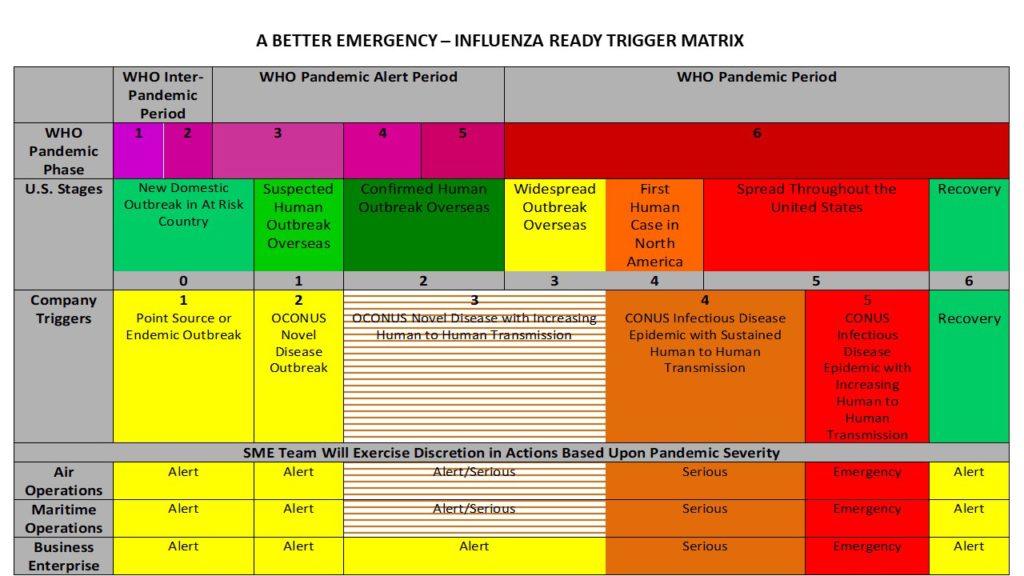Have you stopped to consider the benefits to your organization of reducing seasonal influenza infections annually as an exercise in pandemic preparedness? If not it tells me:
- You’re really not interested in the health of your employees or their families
- You’re not interested in the operational efficiency of your business
- You’re willing to increase healthcare costs and decrease revenue
So what are some of the tangible benefits of being Influenza Ready?
- Increase public awareness and understanding of the influenza hazard
- Improve community pre-planning for influenza pandemics and all-hazards
- Creates minimum standard guidelines for organizations and community entities to follow for adequate influenza readiness
- Encourage consistency in educational materials and response among communities and even states
- Recognize people, entities and communities that have adopted Influenza Ready guidelines
- Less disruption to health, social activities and the economy
For healthcare organizations the collateral benefits of seasonal influenza strategy and vaccination campaign are many:
- Decrease background disease
- Potential cross protection H or N
- Higher revenue -Decrease loss work time
- Decrease health care costs
- Herd Immunity
- Minimize potential for reassortment
- Protect vulnerable population
- Decrease liability
- Differential diagnosis
- Antiviral triage
- Reputation
Is any of this obtainable? Yes it is. The chart below looks at the relationship between actions you should initiate internally and local, state and federal recommendations. At each emergency action trigger point there is a set of corresponding actions. The key is you need to have your own surveillance activities that serve as a determinant for implementation, adjustment and curtailment of various interventions in your operation.
If you’re interested in learning more the reduction of employee primary, secondary, and tertiary absenteeism, and presenteeism which results in annual cost savings sufficient to support pandemic preparedness program contact me at abetteremergency@gmail.com





HI Jan, is this table available in PDG with a reference?
Kind regards,
Diana
sorry, PDF
I emailed to you Diana.